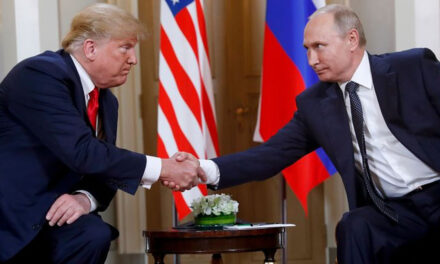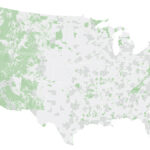
Trump Plans to Cut Number of Refugees Allowed in the Country to Half
The Trump administration, like it promised, plans to drastically cut the number of refugees allowed in the U.S.
The former Obama administration’s U.S. refugee policy allowed 110,000 refugees, but the new policy under Trump will decrease that number to 45,000.
For 2018, the State Department made the recommendation that a maximum of 50,000 refugees be admitted. The Trump administration set that cap for 2017, but is planning to limit it to a number that is the lowest level since the resettlement program was introduced in 1980.
This decision comes after Trump’s first United Nations General Assembly where he said that he hopes to prevent refugees from seeking asylum in the U.S.
“For the cost of resettling one refugee in the United States, we can assist more than 10 in their home region,” said Trump last week.
Since Trump had entered office eight months ago, the number of Syrian refugees has been cut by 80%. The U.N. High Commissioner for Refugees (UNHCR) submitted only 3,591 refugee applications from January to July, compared to the almost 35,000 submitted last year.
As part of Trump’s controversial travel ban, he limited the refugee cap to 50,000 and put a four-momth pause on the program, along with banning Syrians altogether.
Only 8% of refugees admitted into the U.S. this year were Syrians versus the 15% under Obama’s administration. Only one-third were Muslims versus the 50% admitted under Obama.
More Christians, in particular, have been admitted under Trump. 53% were Christian refugees versus the 42% during Obama’s presidency.
As of Tuesday, 53,000 refugees have been admitted with only four days left in the fiscal year.
“It’s impossible to escape the clear message that there’s a new sheriff in town,” said Matthew O’Brien, research director at the Federation for American Immigration Reform.
O’Brien also said that allowing refugees is part of America’s moral obligation, but the government simply can’t appropriately vet all cases. Therefore, the refugee cap needs to account for that.
“In those situations in the past, the default position has been to look to the interests of the refugee. I think after Sept. 11 that is an impossible circumstance,” said O’Brien. “There are some people where it’s just not going to be possible.”
Two trusted officials have said Rex Tillerson, secretary of state, signed off on a memo stating that the maximum number of refugees allotted in the next fiscal year would be 45,000.
Several Democrats are outraged that the Trump administration did not consult with Congress before determining the number.
“We are incredibly frustrated that the annual consultation for refugee admissions, which is required by law, was finalized just one day in advance. It is simply unacceptable to read in the press that the administration had reached its decision on the refugee cap before the mandated meeting with Congress had even been scheduled,” wrote Sens. Chuck Grassley (R-Iowa), Senate Judiciary Committee chairman and Dianne Feinstein, another committee member. “Since August, our offices have made bipartisan requests to the State Department on this meeting. Congress and the law require real engagement on this important subject. An eleventh-hour meeting to check a legal box is not sufficient.”
Other Democrats argue the number is much too small and is “unrealistic.”
However, White House officials emphasize that limiting the number of refugees allowed in the U.S. will help keep the American public safe.
“The president’s strategy on refugees is guided first and foremost by the safety and security of the American people. The United States can also help a larger number of refugees by resettling them in their home region and enabling their eventual safe return home,” said a White House official.
Author’s note: The decision just shows that not only did Trump keep another promise, he is putting America first. Think about all the problems the EU is having with the migrant crisis. International powers need to address the root of the problem where the migrants are fleeing from.




























Larry, Perhaps you would like to comment on the results of the Louisiana special election? The fact that conservative amendments…
Obviously not running on all cylinders, but you never have for that matter. I only call it like I see…
Larry, there you go again trying out your old obfuscation trick. You bring up supposed and alleged past acts of…
Can the author explain why Musk would waste his money then? Can you explain why Repubs lost one out of…
Nope, I led with Hegseth gone, as well as balls to the Walz. FYI: I could care less about "top…